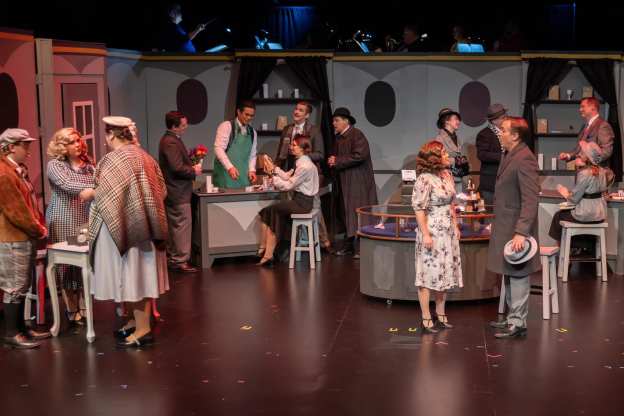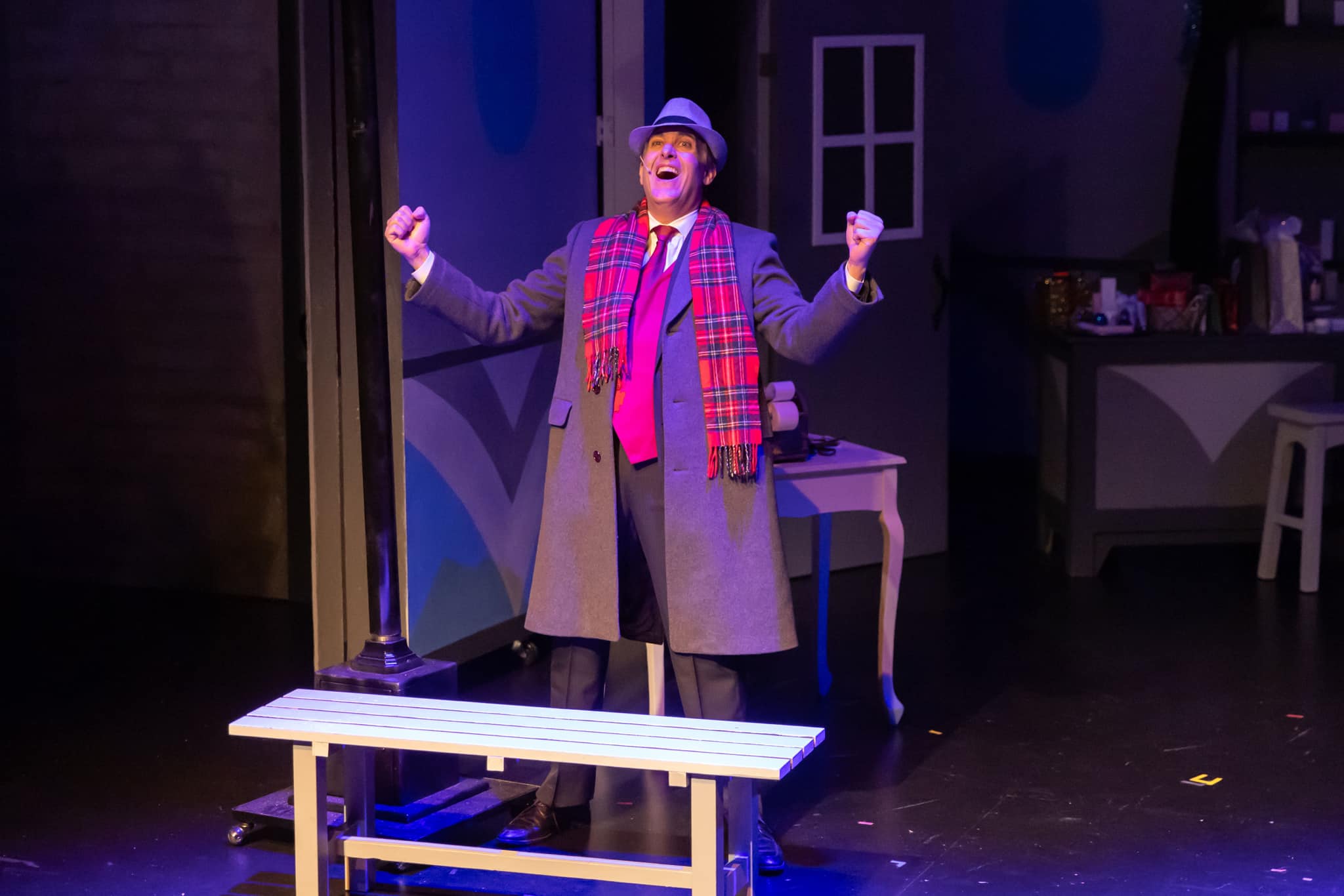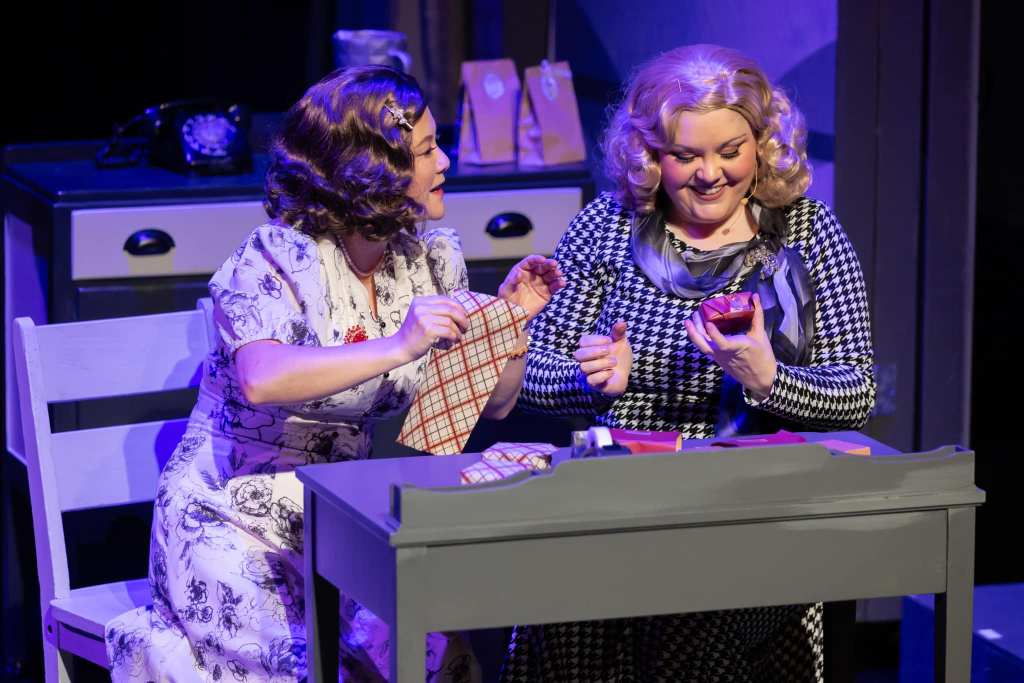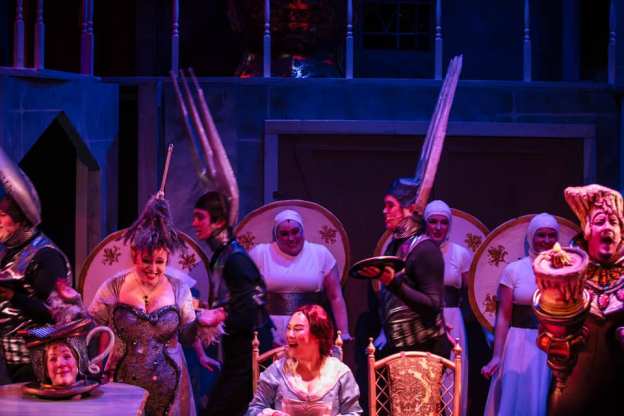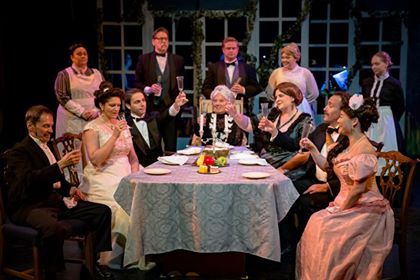Sandy Roberts and Aldrick Dugarte, in Amigo’s Blue Guitar. Photo credit Scott Henderson, Henderson Images
I saw four good plays in the last couple of weeks, and didn’t make time to post about any of them before they closed: The Spinsters (Small Matters), The Drawer Boy (Shadow Theatre), Donna Orbits the Moon (Northern Light), and This is the Story of the Child Ruled By Fear (Workshop West / Strange Victory). I love theatre that reflects situations familiar in my community and my life and leads me to reflect on them, whether in a fantastical setting or a mundane one, and the four plays above all did that.
Joan MacLeod’s Amigo’s Blue Guitar, currently on stage at Walterdale Theatre, also portrays some real-world situations, in ways that are worth thinking about. The set (Leland Stelck) is a beautiful evocation of an offshore BC island cabin, with exposed wood and big windows, open to the mountains and the ocean, and a downstage dock. Text projected on the backdrop (director Bob Klakowich provided the projections) sets the context by providing information about the civil war and unrest in El Salvador in the early 1990s, and about refugees in general and their outcomes in Canada. The character Elias (Aldrick Dugarte) appears to the side, speaking Spanish and simple English, shifting from dreamlike musing about his memories to responding to immigration questions.
The small-scale interactions and byplay among a family living on the island, with early-20s siblings Callie (Crystal Poniewozik) and Sander (Graham Schmitz) sniping at each other and defending each other, draft-dodger-fisherman father Owen (Richard Wiens) holding things together, and grandma Martha (Sandy Roberts) visiting from Oregon, are amusing and familiar. As the action opens, they are scrambling to respond as Sander’s well-intentioned scheme to sponsor a refugee from El Salvador is suddenly becoming real, with Elias due to arrive any minute.
The action of this play takes place over the first six months that Elias is in Canada. The interactions between Elias (pronounced uh-LEE-uss) and the various family members start out embarrassingly awkward, as they don’t speak much of each other’s language and they don’t know much about each other’s country. It is fascinating to watch the superficial assumptions on all sides break down, as they gradually speak more and ask more questions. We see that Sander’s commitment to rescuing Elias, after hearing an inspiring speaker in his sociology class, was actually based on very little knowledge – “I imagined you every morning, living in a village atop a mountain”. “San Salvador is a large city”. As the other family members each get to know Elias better and appreciate him, Sander becomes distant and almost resentful. Sander is completely unequipped for dealing with effects of Elias’s significant trauma. I have been thinking ever since about good intentions not being sufficient, when dealing with any marginalized individuals. Meanwhile, Elias begins to make his own choices about his Canadian life and his future, not the ones recommended by the host family and immigration authorities.

Another theme running through the story is about Owen’s history as a US draft dodger during the Vietnam War. Forty years on, he’s still hurt by the memory of his parents rejecting him, and still dining out on his bravery in crossing the border. He wants to connect with Elias to validate the courage in his own migrant journey, which is both charming and patronizing.

The cast and production team for Amigo’s Blue Guitar were supported in their work by cultural consultant Leo Campos-Silvius, a community cultural leader originally from Chile. After this Sunday’s matinee performance (2 pm), there will be a panel discussion with Leo Campos-Silvius, director Bob Klakowich, and discussion moderator David Goa. The audience will have the opportunity to listen and to ask questions of the participants.
Amigo’s Blue Guitar continues at Walterdale Theatre until Saturday February 17th. Tickets are available here.


